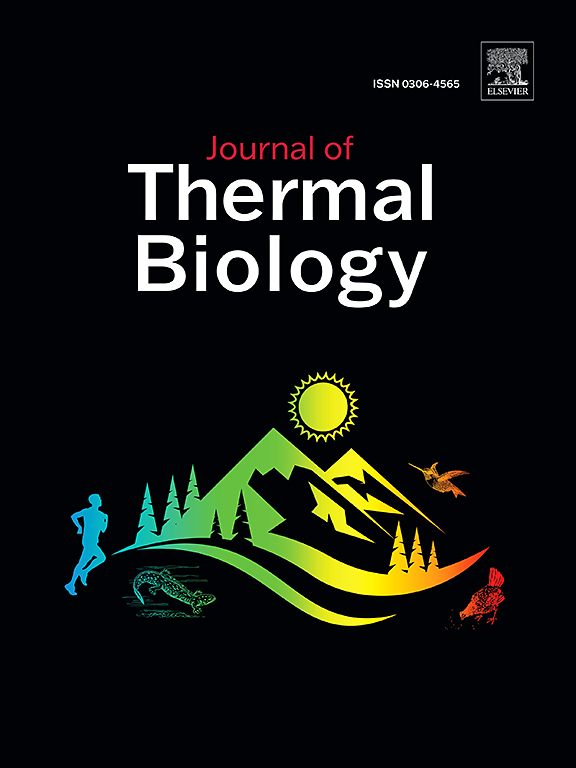在了解鳞翅目昆虫耐寒性方面取得的进展
IF 2.9
2区 生物学
Q2 BIOLOGY
引用次数: 0
摘要
环境温度条件对昆虫的生长、发育、繁殖、存活和分布起着中介作用。随着寒流日益频繁和严重,确定生态和经济上重要的昆虫类群的低温性能和耐寒性以预测它们对全球环境变化的反应至关重要。本综述涵盖 49 种鳞翅目昆虫(飞蛾和蝴蝶)的耐寒策略,重点关注已知的作物害虫和作物储藏设施物种。我们综合了鳞翅目中已被充分研究的物种的耐寒策略,发现在鳞翅目的不同属和科中,停歇是一种独立进化的独特机制。然而,在每个生命阶段出现的停歇是因物种而异的,在大多数已研究的鳞翅目物种中,觅食阶段(幼虫)是主要的越冬阶段。我们还发现,开始停歇和提高耐寒性是相互依存的现象,通常同时发生。此外,采取耐寒策略并不是一种固有的、固定的性状,在很大程度上受到物种的地理分布和饲养条件的影响。本综述进一步发现,鳞翅目物种的主要耐寒策略是避冻,而不是耐冻或易受寒。鳞翅目昆虫的耐寒性主要取决于低温保护剂的积累和过冷点的降低。我们强调了一部分鳞翅目昆虫在耐寒策略和机制方面的差异,然而,要了解鳞翅目昆虫对全球变化的广泛响应,还需要进一步的工作来阐明大量被忽视的物种和种群的耐寒策略。本文章由计算机程序翻译,如有差异,请以英文原文为准。
Advances in understanding Lepidoptera cold tolerance
Ambient thermal conditions mediate insect growth, development, reproduction, survival, and distribution. With increasingly frequent and severe cold spells, it is critical to determine low-temperature performance and cold tolerances of ecologically and economically essential insect groups to predict their responses to global environmental change. This review covers the cold tolerance strategies of 49 species of Lepidoptera (moths and butterflies), focusing on species that are known as crop pests and crop storage facilities. We synthesize cold tolerance strategies of well-studied species within this order, finding that diapause is a distinctive mechanism that has independently evolved in different genera and families of Lepidoptera. However, the occurrence of diapause in each life stage is specific to the species, and in most studied lepidopteran species, the feeding stage (as larva) is the predominant overwintering stage. We also found that the onset of diapause and the improvement of cold tolerance are interdependent phenomena that typically occur together. Moreover, adopting a cold tolerance strategy is not an inherent, fixed trait and is greatly influenced by a species' geographic distribution and rearing conditions. This review further finds that freeze avoidance rather than freeze tolerance or chill susceptibility is the primary cold tolerance strategy among lepidopteran species. The cold hardiness of lepidopteran insects primarily depends on the accumulation of cryoprotectants and the depression of the supercooling point. We highlight variations in cold tolerance strategies and mechanisms among a subset of Lepidoptera, however, further work is needed to elucidate these strategies for the vast numbers of neglected species and populations to understand broad-scale responses to global change.
求助全文
通过发布文献求助,成功后即可免费获取论文全文。
去求助
来源期刊

Journal of thermal biology
生物-动物学
CiteScore
5.30
自引率
7.40%
发文量
196
审稿时长
14.5 weeks
期刊介绍:
The Journal of Thermal Biology publishes articles that advance our knowledge on the ways and mechanisms through which temperature affects man and animals. This includes studies of their responses to these effects and on the ecological consequences. Directly relevant to this theme are:
• The mechanisms of thermal limitation, heat and cold injury, and the resistance of organisms to extremes of temperature
• The mechanisms involved in acclimation, acclimatization and evolutionary adaptation to temperature
• Mechanisms underlying the patterns of hibernation, torpor, dormancy, aestivation and diapause
• Effects of temperature on reproduction and development, growth, ageing and life-span
• Studies on modelling heat transfer between organisms and their environment
• The contributions of temperature to effects of climate change on animal species and man
• Studies of conservation biology and physiology related to temperature
• Behavioural and physiological regulation of body temperature including its pathophysiology and fever
• Medical applications of hypo- and hyperthermia
Article types:
• Original articles
• Review articles
 求助内容:
求助内容: 应助结果提醒方式:
应助结果提醒方式:


